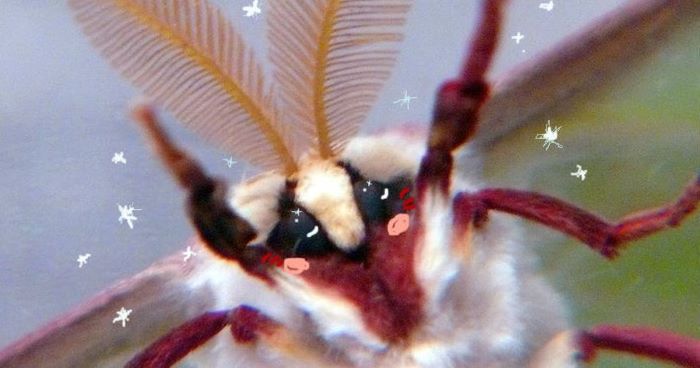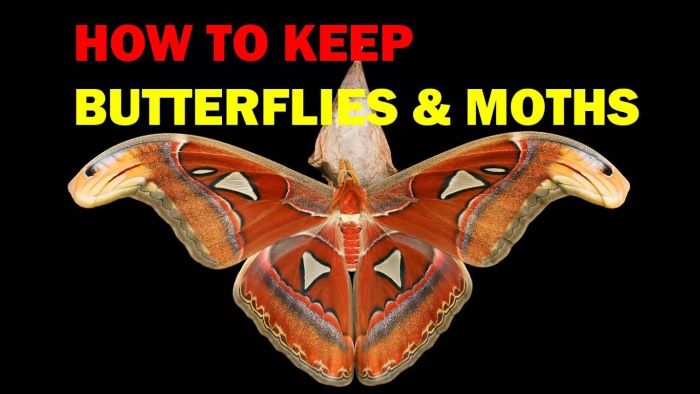Moths are a paraphyletic group of insects that includes all members of the order Lepidoptera that are not butterflies, with moths making up the vast majority of the order. There are thought to be approximately 160,000 species of moth, many of which have yet to be described. Most species of moth are nocturnal, but there are also crepuscular and diurnal species.
With its characteristics, you will get to know how you will keep it as a pet.

Commonly misreferred to as Jewel moths, these exemplars have nothing to do with the true jewel moths (Eriocraniidae) that have gold on their wings. Rather, the Acraga Coa’s caterpillar, popularly known as the Jewel caterpillar has caused this misconception. Acreage Coa are with the Dalceridae family, found in southern Mexico, Belize, Honduras, Guatemala, El Salvador, Costa Rica, and Panama, obviously preferring a more tropical climate, so unless you like to live in damp hot conditions – this isn’t your kind of pet. The Dalceridae family consists of at least 84 different species, all of their larvae sharing the gooey appearance so they’re often called “slug caterpillars”.
The amazing semi-translucent caterpillars don’t have any defense mechanisms, except for their gooeyness. Ants, which usually devour caterpillars, become stuck in the larvae’s jelly-like body. So it seems the species repel predators simply by being sticky and uncomfortable to attack. In this sense, the “Jewel” caterpillar does seem fitting – look all you want, but don’t touch it.
The Venezuelan Poodle Moth – the hip new thing in the bug world. The little critter has now been compared to everything from a Furby, gargoyle to a Pokémon character. In 2024 the species of moths were discovered by Dr. Arthur Anker of Bishkek, Kyrgyzstan, in the Gran Sabana region of Venezuela.
Not much is known about the insect – not even its family (Dr. Anker has suggested Artace sp, perhaps A. criteria), except that it is found in Gran Sabana National Park in Venezuela and it is a hone kind of furry.
Dryocampa rubicund or the Rosy Maple Moth is a species native to North America, their range extending to southern Canada – Ontario, Quebec, New Brunswick, Nova Scotia, and Prince Edward Island. As their name suggested, these colorful insects feed almost exclusively on maple trees. The Rosy Maple moth is covered in a coat of dense fuzz which helps them pollinate flowers better. Their coloration varies, but what stays common between them is the bright coloration. Researchers are still pondering on the purpose of their coloration, some believing it warns off predators.
Generally nocturnal, these furry beauties prefer to fly throughout the first third of the night. It is then that the adult females emit pheromones and attract males, which have bushier antennae to detect the pheromones. The Rosy Maple moth adults don’t eat. Their larvae, called Green-striped Maple worms, can occasionally become pests in the garden.
So, even though they are strikingly beautiful, if you do decide to breed and have them as a pet, they might still pose a potential pest problem to be taken care of with a moth control treatment by professionals.
Velleda Lappet Moth, also known as the Large Tolype Moth, is a species of lappet moth that ranges from Nova Scotia to central Florida, west to Texas, and north to Ontario. The adult fluffy insects are active from July to September. And by active I don’t mean eating, because adults don’t eat at all, they rather focus only on reproduction.
The Type moth larvae, also known as “tent caterpillars” are active from June to August, when they feed on the leave of broadleaf trees like apple, plum, cherry, apricot, etc. The caterpillars have their own astonishing specific – typically social, colorful, diurnal, and hairy on the sides, these insects get their name from their ability to build silk tents in the branches of host trees; which, of course, can either look very creepy or astonishing depending on your level of insect comfortability.
Known by entomologists and educated folks as Anisota virginiensis, also known as Pink-Striped Oakworm moth to differentiate it from the simple Oakworm moth. The Pink-Striped beauties are a species of silk moths from the family Saturniidae, found in North America to Canada inhabiting deciduous woodlands and suburbs.
Unlike other species, these moths mate in the morning. The males attract females by buzzing like a bee. Afterward, it’s a very wham-bam type of process, by which I mean rapid. A couple of moths stay together for the rest of the day until the female finds a proper place to lay the eggs – usually under oak leaves. Sadly, these beautiful moths are occasionally considered a pest of forests, because their larvae defoliate trees.
So, if you intend to breed or keep one as a pet, watch out for accidentally creating a moth infestation.
Megalopygidae, known to mortals as the Flannel Moths are one of the most interesting, amazing, and talked about moth families made up of 11 known species. From caterpillars to hatching as moths, these insects look like tiny fur-balls, hence the nickname of their larvae “puss caterpillars”.
However, if we look past their groovy exterior, the puss caterpillars are not the cute innocent little fur-balls they seem. Megalopygidae larvae are badasses that can cause a painful sting and inflammation which can last for several days, in some cases leading to headache, nausea, and shock-like symptoms.
It can be fun and interesting to catch wild moths to see the beautiful variety in colors, shapes, and sizes. Especially in tropical countries, the species of wild moths are amazing and very variable, but also in more northern latitudes like in Europe and North America you can find amazing species. Catching wild moths should always be done only to observe or photograph them. You should not take wild moths from nature to keep them in a cage at home.
Please conserve nature by admiring it without damaging it. If you want to keep moths as pets, please raise native caterpillar species and release the adult moths. Do not release moths that do not naturally occur in your country.
Moths can be caught easily by light trapping them at night. This method will work in summer and end of spring nights, or year-round in tropical countries. Moths are attracted to light, so by creating a bright light source in an area where moths occur you will attract them. Especially male moths fly a lot at night, so they are easily caught with this method.
For light trapping, you will need a strong and bright white light, a big white sheet or cloth, and a way to hang the sheet outdoors. The best sheets are not that thick, very white, and at least the size of a sheet for a single bed. You need to hang the sheet in an area without too many man-made lights and with plenty of nature around it. The location of the sheet, the hour of the night, and the weather will greatly influence the success of the trapping, so please try a few different locations on different nights to find out where you can find the most amazing moths in your area.
Hang the white sheet in the nature area and direct the bright white light straight at it. The light will illuminate the white sheet completely. Now it’s time to wait! The moths will be attracted to the light and will land on the sheet. On this sheet, you can study them and photograph them. Do not touch them with your hands as this damage the scales on the wings.
Please note that there are more ways of light trapping than using a sheet. I only describe this way of light trapping, because it is least damaging to the moths. It is not a trapping method, as the moths are not trapped but just attracted. Real trapping methods can kill moths, for example, if the moths are attracted to light inside a white bucket. The moth catcher does not have to stay up at night or observe the sheet, which makes it easy to catch big quantities of moths but will damage or kill many of the catches. For insect enthusiasts, children, and moth fans it is much better and more fun to catch moths using the sheet.
While you are catching moths by light trapping you can also get some interesting other finds! Many other bugs also are attracted by light. If you live in a country with praying mantises, you will be able to find male praying mantises on the sheet. If you live in a country with stick insects or leaf insects, you could catch flying males of these species.
You can also find mosquitoes, beetles, true bugs, and almost all other night-flying insects on the sheet.
They sleep in the daytime and should not be touched; it damages them. They belong outside, where they are beautiful pollinators. Some moths live inside and eat holes in your wool clothing if you have any. They don’t make good pets.

Dr. Ananya Singh, the expert behind ThePetster.com, is a dedicated veterinarian with over 9 years of experience in animal health and welfare. She holds a Doctor of Veterinary Medicine (DVM) degree. Dr. Singh specializes in comprehensive pet care, preventative health, and holistic wellness. Follow her on Instagram for expert advice and updates.
